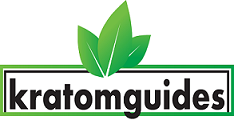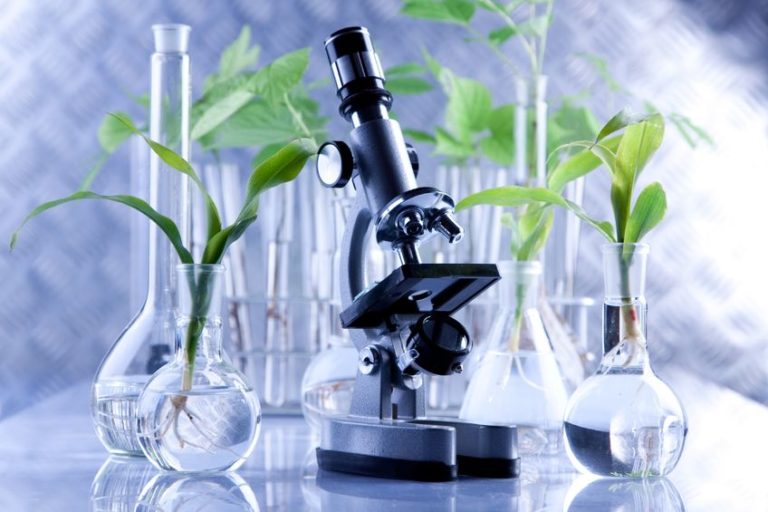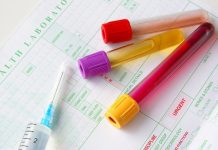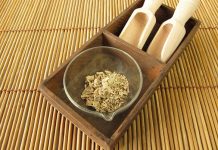Did you know that the calming, body-regulating herb kava can be toxic for your body? If you have ever wondered whether too much kava causes an overdose, yes! You can overdose on kava.
Your body is a temple, and you must not destroy it by overdosing on kava. Kava tea and supplements are prepared from a unique shrub scientifically known as Piper methysticum. A set of chemicals called lactones are present, beneficial in various health conditions. However, too much kava can cause high blood pressure, liver malfunction, electrolyte imbalances- the list goes on.
If you don’t think twice about your daily kava dosage, you should! One must wonder how much of the herb causes adverse effects to always be on the safe side. Small acts of carelessness can cost you more than you can imagine. Kava is traditionally consumed as a beverage but is also available as a dietary supplement and anxiolytic medicine. Read on about the recommended dosage, health benefits, and contraindications of kava below!
Can You Overdose on Kava Products with high kavalactone?
Kavalactones are lactone compounds found in kava. Although scientists have done little research on their structure and mechanism in human and animal systems, some fascinating breakthroughs have left us thinking! A significant amount of kavalactones is present in the regular dose of kava, while some kava products contain the maximum amount.
Kavalactones, namely 7,8-dihydromethysticin, dihydrokavain, and yongonin comprise 96 percent of the lactone compounds found in kava. Commercial lactones are derived synthetically from ethanol or maybe acetone extracts. Little is known about the appropriate quantity of kavalactones in these extracts.
The normal dosage of this herb has about 15 percent kavalactone content. Kava is usually made from the shrubs of the perennial plant from class Piperaceae. Surprisingly, more kavalactones are present in the roots and shrubs of the plant as compared to other parts. Hence, the relative concentration of kavalactones depends upon extraction methods and location.
The solvent used for extraction may also contribute to the increase in kavalactone levels. This extraction solvent is usually water, but recently, other solvents in the preparation have caused a less desirable high concentration of these compounds. The concentration also depends upon cultivars, which may vary from region to region.
Moreover, in modern farming, the concentration can be biologically controlled via genetic variations. Extraordinarily high or low levels of lactone compounds are thus a result of the commercial extraction of kava. Companies may regulate plant genetics to prevent the toxic effects of overdose upon the human liver and other organs.
Proper dosage of kava
So, what’s the proper dosage of kava? How should you know what amount is good or bad? Well, the lactone compound content dictates this decision. Lactone intake among traditional consumers must not exceed 750mg per day. After this threshold, kava is bad for you!
Some researchers emphasize a maximal 250mg/day dosage for optimal health and body regulation. Pharmacologically, these figures can achieve desired effects. Figures have been helpful as safety factors for herbal tea consumers in the past. However, more recent data shows that underlying co-morbidities as hepatitis cirrhosis do not match historical data.
The administration of kava in various pathologies suggests that no adverse effects are seen when extracted in water. Furthermore, consumption of more than recommended dosage causes hepatotoxicity. Control of the dosage in traditional use is essential because people don’t see it as a medicinal drug. Instead, they believe it to be a beverage or recreational drink, as they do coffee or tea. This is a misconception that must be cleared!
Some people use kava daily, whilst others use it occasionally. The way one’s body reacts to it is directly related to its concentration and regularity. Our advice is to start consumption with a very mild potency of kava, having a large solvent concentration and low frequency. This means you should look for a brand that sells light, chemical-free blends and consume a recommended portion occasionally until your body gets acclimated to this new nutritional change.
Remember: your body is a temple! If you are a regular consumer, simply comply with above mentioned daily dosage as a safety factor.
Health Benefits Of kava
The use of kava for medicinal and health purposes dates back to ancient times when people in Fiji used it as an anxiolytic and anti-inflammatory agent. Modern research has strong evidence of its incredible health benefits.
It is a common dietary supplement manufactured in capsules made from the root extracts of the Piper methysticum plant. Did you know this herb is used in Europe and other western countries as an effective anti-anxiety substance? It’s an all-rounder; even patients with sleeping disorders benefit from it!
The anti-toxic action causes excellent improvement in patients with chronic inflammation. There are several pieces of evidence of its anti-carcinogenic activity. Furthermore, the kava administration in active and passive smokers also reduces the risks of lung carcinogenesis. That’s not all! Women use herbal tea to reduce symptoms such as cramps and restlessness. It is also beneficial for pre and post-menopausal symptoms.
The magic herb is used worldwide as a non-prescription treatment for various neurological disorders. The active ingredients in kava, kavalactones, are specialized sedatives, local anesthetics, anti-convulsants, and protective neurons. They tend to reduce the excitability of neurons and their effectors, promoting relaxation. Hence, it’s also used to treat chronic pain.
Symptoms And Signs Of Overdosing On kava
Consuming more than the advised dosage is harmful to you. Kratom overdose symptoms are seen in addicts or ‘kava-holics.’ If one takes kava for recreational purposes in an unbalanced fashion, they are at high risk of overdosing. Hence, ask yourself: Am I taking a right, recommended dosage of kava? Am I overly dependent on it? Alternatively, you may check yourself for symptoms that may reflect overdosage.
Don’t worry- we’ve done the homework for you! The following symptoms prevail with continuous or addictive use of kava:
● Vertigo
● Palpitations
● Weight loss
● Hepatotoxicity
● Loss of appetite
● Lung infections
● Allergic reactions
● Dry and flaky skin
● Frequent sweating
● Increased heart rate
● Blood cell disorders
● Skin appears yellow
● Respiratory discomfort
● Blood pressure imbalance
● Blood in urine or sputum
● More than normal bleeding
● Increased frequency of breathing
● Eyes and the areas around it turn red
● Repeated episodes of nausea and vomiting
● Increased liver functioning enzymes in blood
● Metabolic symptoms as the inability to digest and absorb proteins
● Dermatological symptoms, e.g., swelling or redness on the face, tongue, and throat
The mentioned symptoms are not all that an overdose can cause. Therefore, one must be careful- and alert. We understand that herbal tea is considered healthy but remember: an excess of everything is terrible! Moderation is key for consumption, especially for kava.
What does the FDA say about kava overdose?
In March 2002, the FDA issued a consumer advisory for dietary supplements associated with kava. FDA insisted on the fact that consumption of too much kava can cause severe liver injury. For a long, health care professionals in Germany and Switzerland have been reporting the occurrence of hepatic toxicity. You’ll be shocked- all the cases reported were kava consumers!
We believe this cannot be coincidental. However, most of them had severe ulceration of hepatic tissue along with symptoms of chronic hepatic disease and had also undergone liver transplants. Hence, people who have a history of hepatic issues must not take a strong kava dosage- who knows, and it may prove lethal.
In the rise of the cases reported, the FDA, after several investigations issued a statement. Here’s a summary:
● People should be cautious while consuming herbal drinks.
● Health care providers should be aware of their patients’ dietary habits if they present with liver disease symptoms.
● Overuse of kava can cause serious liver injury.
● Kava consumers with a history of liver disease or hepatitis are at high risk.
Good news- people have begun to understand the severity of the issue! In the light of the FDA’s advice, several countries, including Germany, banned the pharmaceutical use of Kavalactones. They know that its medicinal uses are primarily advantageous, but overdose can cause serious diseases.
How much is too much?
The daily recommended dose of the kava must not exceed 250 mg per day, which FDA and NIH recommend. More than that causes severe complications, including liver disease and other related pathologies.
Therefore, consumers should be aware! You must be mindful of the amount of kava you put in your body. The herbal drink is of recreational and celebratory importance; hence, it serves the same purpose if taken in light, chemical-free blends. Furthermore, herbal tea or dietary supplements must not exceed a limit while celebrating.
The frequency of dosage also plays a vital role in deciding the dose of the daily kava index of a regular consumer. One serving size of herbal tea should be taken once or twice a day, and you should limit your dietary capsule as per a family doctor’s advice. Stick to one form of kavalactone- you can’t have both the supplement and the tea!
The solvent of choice is also crucial in deciding the potency of daily kava intake. A diluted drink has a significantly less kava index than a concentrated drink. some researchers have also recommended the borderline high index of 784mg/day. As mentioned before, a dose above this value causes serious complications, so do yourself a favor and curb the tea temptation.
What to do in case of an emergency?
You’ve taken too much of the herb- now what? Well, we warned you, but let’s not waste time. First off, you must check yourself for overdose symptoms to understand how you’re reacting to the overdose to assist your health care providers.
If you can’t reach your health care provider or hospital immediately, drink water with electrolyte regulators such as ORS. This will decrease the concentration of kavalactones in your bloodstream and reduce any blood osmotic pressure or tachycardia.
An overdose emergency associated with kava is usually of two types, acute and chronic. Occasional and acute overdose has mild to moderate symptoms, but if you’re a kava-holic, you may experience chronic signs.
Acute effects
● Vertigo
● Slurred speech
● Gait abnormality
● Weakness
● Reduced blood pressure
● Lightheadedness
● Shortness of breath
Chronic effects
● Hepatic injuries
● Stomach ulcerations
● Kidneys diseases
● Disorientation
● Hallucinations
Acute symptoms vary in intensity and severity from chronic symptoms. Acute symptoms may or may not need special attention and are quickly relieved. These symptoms must be addressed, and the patient should receive emergency treatment before their condition worsens.
Chronic effects always need special attention as they may be life-threatening. In most cases, chronic effects are irreversible but require proper management and treatment by a concerned doctor or herbal specialist. Address these problems as soon as possible to avoid irreversible issues!
To sum it up
In a nutshell, kava is a promising clinical modality, and it can help reduce toxic effects like anxiety and infections if taken wisely. It has harmful effects in high doses, which can cause acute and chronic emergencies, so beware! To gain optimal and beneficial results, kavalactones must be administered according to the recommended dosage.
If you’re a kava consumer, educate yourself about your preferred blend, such as its lactone compounds, recommended dosage, solvent, and methods of extraction. Keeping yourself in the know can save you from severe, even fatal consequences.








